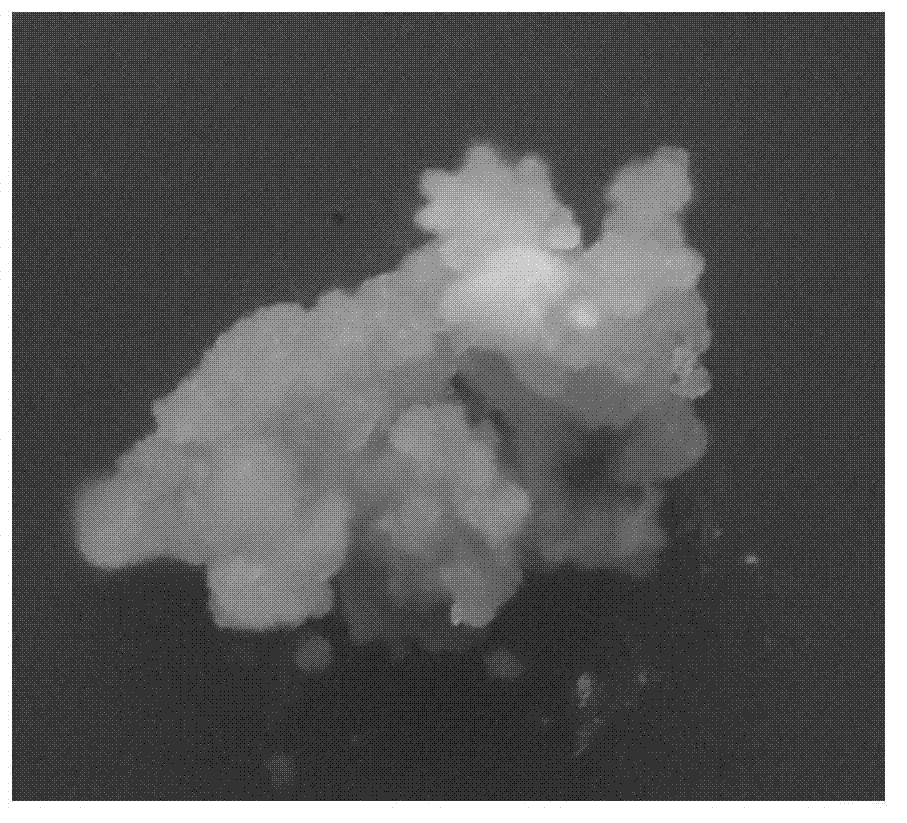Vitrification ultralow-temperature preserving method for agapanthus embryogenic callus
A technology of embryogenic callus and vitrification ultra-low temperature, applied in gardening methods, plant preservation, botanical equipment and methods, etc., can solve the problems of low survival rate, failure to survive, and difficulty in preserving plant materials
- Summary
- Abstract
- Description
- Claims
- Application Information
AI Technical Summary
Problems solved by technology
Method used
Image
Examples
Embodiment 1
[0037] 1. Experimental materials
[0038] 1.1 Experimental object: Agapanthus embryogenic callus was propagated in MS solid medium containing 1.5 mg / L picloram for 20 days at 25°C, and the obtained friable and loose embryogenic callus was used as a vitrification cryopreservation experiment Object (for the preparation method, please refer to the literature "Research on Rapid Propagation Technology of Blue Lily", Fan Xianli, 2009, Master's Degree Thesis of Shanghai Jiaotong University).
[0039] 1.2 Experimental reagents
[0040] 1.2.1 The loading solution contains 2M glycerol, 0.4M sucrose, 10mM KNO 3 MS culture medium.
[0041] 1.2.2 Vitrification solution is MS culture solution containing 30wt% glycerol, 15wt% ethylene glycol, 15wt% dimethyl sulfoxide, and 0.4M sucrose.
[0042] 1.2.3 The washing solution contains 1.2M sucrose and 10mM KNO 3 MS culture medium.
[0043] 1.2.4 The pretreatment medium is MS solid medium with sucrose content of 0.3M, 0.5M and 0.7M respective...
PUM
 Login to View More
Login to View More Abstract
Description
Claims
Application Information
 Login to View More
Login to View More - R&D
- Intellectual Property
- Life Sciences
- Materials
- Tech Scout
- Unparalleled Data Quality
- Higher Quality Content
- 60% Fewer Hallucinations
Browse by: Latest US Patents, China's latest patents, Technical Efficacy Thesaurus, Application Domain, Technology Topic, Popular Technical Reports.
© 2025 PatSnap. All rights reserved.Legal|Privacy policy|Modern Slavery Act Transparency Statement|Sitemap|About US| Contact US: help@patsnap.com


